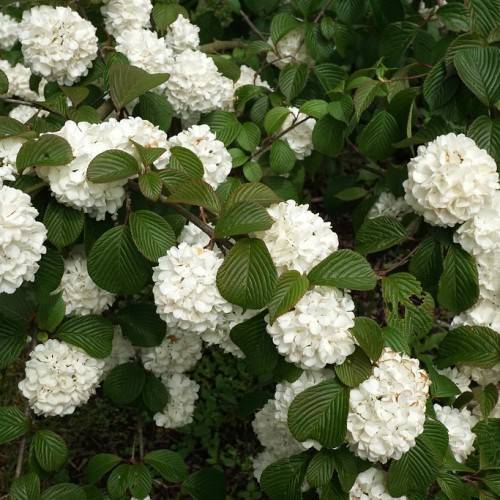
Japanese snowball
Viburnum plicatum f. pilcatum
Cycle:
Perennial
Watering:
Average
Hardiness Zone:
5 - 8
Flowers:
Flowers In Spring
Sun:
Full sun,part shade
Fruits:
Fruits Ready In Fall
Edible:
Yes
Leaf:
Yes
Growth Rate:
Low
Maintenance:
Low
Drought Tolerant:
Yes
Invasive:
Yes
watering
Water Japanese snowball plants deeply and regularly during the first growing season for best establishment. Water approximately twice per week, or enough to keep the soil moist but not soggy. Once established, water once a week or just enough to keep the top 3 to 4 inches (7.5-10 cm) of the soil surface moist. Generally, stems and foliage should look perky and full if the plant is receiving enough water. The plant can take a bit of drought but will need to be watered more often during periods of hot and dry weather.
sunlight
Japanese snowball plants require full sun or partial shade, with at least 4 to 6 hours of direct sunlight each day spread throughout the day. Ideally, the plant would receive direct sunlight in the morning and filtered sun or dappled shade in the late afternoons. This will help to protect the plant from too much heat, which can stress the plant or cause it to become scorched.
pruning
Japanese snowball should be pruned once a year in late winter, just before the new growth appears. Pruning should be moderate, removing dead, diseased, or damaged branches, and shaping the plant as required. Thin out some of the dense new growth to allow better air and sunlight penetration. Additionally, the long stems of this popular plant should be cut back by approximately 1 third to keep the plant neat and compact.
